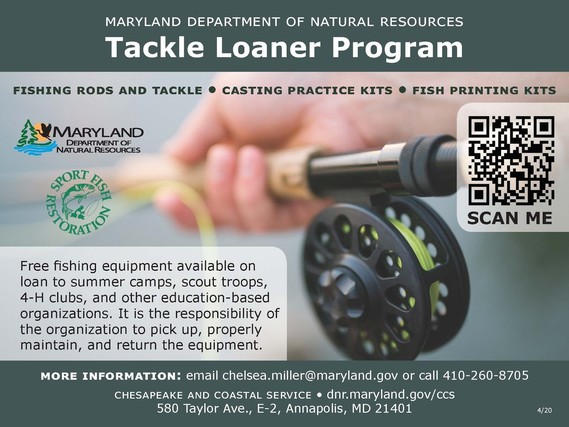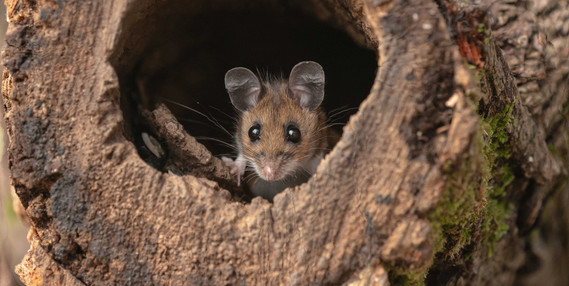And so spring returns.
Keep your eyes and ears open.
From the South they fly.
-Chelsea Miller
Credit: Matt Felperin, NOVA Parks Roving Naturalist and Wildlife Photographer. Location: Patuxent River, MD.
All About the Osprey
The osprey (Pandion haliaetus) is one of Maryland’s most charismatic migratory bird species. They can be seen arriving back to their nesting grounds, or passing through Maryland, as early as mid-February! These remarkable raptors fly hundreds to thousands of miles from their wintering grounds in southern North America and throughout South America. They return to produce the next generation of Maryland’s ospreys or to reach northern destinations.
Naturalists on the Patuxent River, a portion of which is a part of the Chesapeake Bay National Estuarine Research Reserve, have been studying these birds since 1985. The study includes systematically documenting breeding success and banding the birds. Greg Kearns, a master bander, reports all the banding data from each individual and uses bands provided by the United States Geological Survey’s Bird Banding Laboratory. These bands are made of metal, do not harm the birds, and once seen or found they can be reported back to the bander. The band reports, called recoveries, can then be mapped to track the ospreys seen in Maryland.
The recovery map above has been created from all of the band returns collected from ospreys banded along the Patuxent River. As technology improves and as data is collected, we are able to discover the most crucial habitats and behavioral patterns of the birds, improving our conservation strategies!
To learn more about bird banding and their results please visit the USGS Bird Banding Laboratory.
To watch ospreys live while they reclaim their nests, lay eggs, and raise their chicks, please visit the live osprey cameras at Patuxent River Park.
At-Home Learning
The department offers a variety of learning activities that can be done from home. Below you will find a list of websites and programs that our units have put together for educators.

Spring Tree Order Form Now Available
The Tree-Mendous order form is an agreement between a wholesale nursery and our program to provide quality native trees to be planted on public land. The hope is to assist local governments and community groups plant trees at a reduced cost to benefit every Marylander.
Tree-Mendous provides free delivery to three locations across the state each spring and fall, in order to further reduce planting cost. Groups can also pay for delivery directly to their site for an additional fee.
For more information about this and other Urban Forestry Programs, visit us online.
|
 |
During these tough times, education through angling has been a stand-out method to allow youth and community to learn outside at safe distances. Teaching for different learning types, building confidence and self-esteem, drawing a connection to the local environment, and significant stress relief are just a few benefits of fishing. So let's give students a break from the virtual world, get back outside, and go fishing! If your school is interested in initiating an After School Fishing Club program and needs to borrow equipment, this is also eligible for the tackle loaner program. Please reach out to Chelsea Miller at chelsea.miller@maryland.gov for more information.
Professional Development Opportunities

Wild Acres Webinars
Are you interested in backyard wildlife habitat and/or learning about local species and natural resources? If so, check out the upcoming Wild Acres webinars. This spring, we will have talks on window collisions and wildlife, the 2021 Create Your Own State Parks program, ephemeral wildflowers, and more!
For more information, visit the DNR website.
|
MAEOE Environmental Education Certification Program - Spring Course!
The Maryland Association for Environmental and Outdoor Education (MAEOE) has partnered with Notre Dame of Maryland University to offer an online course focused on interdisciplinary, hands-on learning. Each day focuses on engaging projects using guides from and presentations by the Department of Natural Resources, National Oceanic and Atmospheric Administration (NOAA), and NASA. Participants will gain an in-depth understanding of biodiversity studies and Meaningful Watershed Education Experiences (MWEEs) that they can apply to their education sites.
Time: 5 p.m.– 9 p.m. Tuesdays, March 23 – May 11
Cost:
- $1,450 for 3 graduate credits, optional Maryland Environmental Educator Certification available for additional $125
- $610 (no registration fee) for 1 graduate credit plus Maryland Environmental Educator Certification
Contact: Dr. Juliann Dupuis, jdupuis@ndm.edu for registration information
 Credit: Rick Dove
|